Being a cheapskate generally means buying the least expensive option available. Or not buying anything at all. Plus, surely going for the cheapest nearly always means settling for the poorest quality ?
So the life of a cheapskate might not be a particularly happy one if you were only ever using poor products that were likely to implode at any time.
Thankfully, in film photography, one can have the financial benefits of being a cheapskate without being frustrated with second or third rate kit.
Since I was gifted my first film camera in mid 2012, I’ve been playing with all kinds of 35mm cameras, most of which I’ve paid less for than the price of a couple of posh coffees for.

The above photograph for example was made with a Minolta X-300 SLR, with Minolta MD 50/1.7 lens.
Together they cost a few pence under £15, and both were in great condition.
The Minolta Rokkor and MD lenses are really special, and the main reason for buying any Minolta body is to use this still underrated glass.
Other shots on this roll were comparably pleasing.
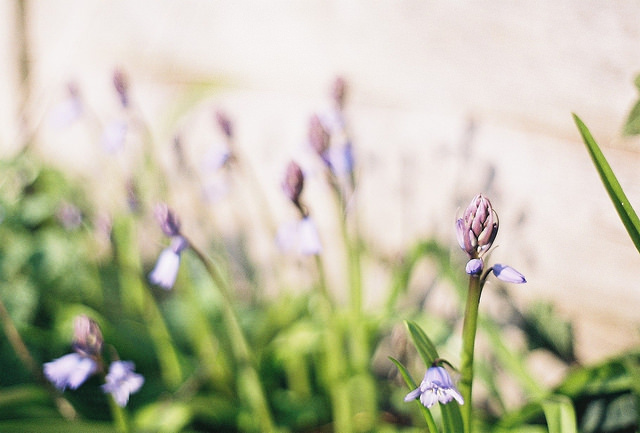
The film used here is expired Fuji Superia 100 which I got a bulk batch of and worked out about £2.50 a roll. It’s sumptuous stuff, and my favourite emulsion.
Processing was done at my local supermarket lab (Asda), developing and scan to CD only, and works out at under £3.50 a roll if you have a few done at a time and scanned to the same CD.
If I never used this camera and lens again, this one off set of photographs cost me around £21.
But of course we don’t buy a camera to just use once, and the ones we enjoy we use time and time again.
So that initial outlay of £15 very quickly becomes even more negligible, and the only costs are film and processing.
After shooting say twelve rolls of film, you potentially have 432+ photographs that have cost £15 (camera and lens) + £30 (12 rolls of £2.50 film) + £42 (12 x £3.50 processing). A total of £87.
Or, about 20 pence per shot.
This of course includes the initial outlay for the camera and lens, so beyond that, really you just have the film costs. The next 12 rolls would cost £30 + £42 = £72 for 432+ shots, which is now just 17p per shot.

For me, being able to create such photographs for mere pence is a huge thrill.
This is before we even get to the experience of using the kit. As I said before, cheap usually means shoddy quality.
But with vintage cameras, you can have in your hands beautifully designed and finely engineered equipment for a few pounds.
The feeling of using such cameras and lenses is a world away from the creaking plastic and LCD screens of most modern cameras that cost well into the hundreds of pounds.
A gorgeous chunk of metal, glass and gears is going to bring infinitely more sensory satisfaction than any DLSR ever will.

The above shot I took with a Chinon CE-4S SLR and an M42 Helios 44-2 lens, plus M42 > K mount adapter.
The Chinon cost me £6, and was sold as untested. It needed new batteries then fired up perfectly and shot a couple of dozen rolls before I sold it on, for more than I paid for it. (This in itself can become an addictive game in cheapskate photography!)
The Helios 44-2 lens I found at a camera fair in a random plastic bin. The body was battered, the paint worn, and the glass had a couple of bubbles inside. The dealer wanted £10, I got it for £7.
Given the photographs I’ve since taken with the Helios, it’s one of the best seven pounds I’ve ever spent in photography.
The Chinon is Pentax K mount. People overlook them because they want Pentax ME Supers, though many of the Chinons are just as capable and a few, like the CE-4S, have more features. So the Chinons can be picked up silly cheap, like my £6 example.
The lens adapters are widely (and of course cheaply!) available, and allow you to use the vast range of M42 lenses on them, in aperture priority and full manual mode. The adapters are about £7.
So this time the camera plus lens plus adapter cost me the heady sum of about £20.
(In the past I’ve bought a couple of excellent K mount lenses, the Pentax-M 50/2 and the Ricoh Rikenon 50/2, for about £6 each also. So, a total of just £12 for one of these plus the Chinon body.)
The film was expired FujiColor C200 I got a batch of pretty cheap (around £2 a roll), so costs per photo were on par with the Minolta X-300 and Fuji Superia 100 combo I mentioned before.
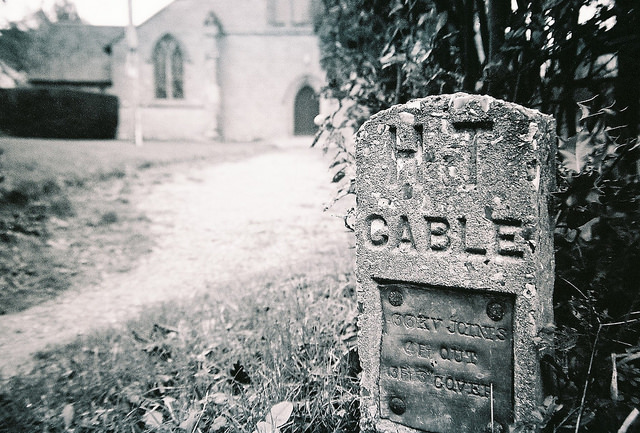
This photograph I made with a Pentax Espio 120SW, a cracking little compact (as most Espios are), that’s well featured and has a very capable lens starting at 28mm. Not being a big fan of zooms, I just treat it as a 28mm fixed lens compact and it produces very pleasing images.
The Espio came in a lot of 13 (lucky for some!) Pentax compact cameras that I paid just £12.75 for altogether.
Three of them were dead on arrival, but the other 10 all worked, and amongst them were some of the finest Espios made including the classy aluminium 170SL, the tiny little 115M, and the super featured 160.
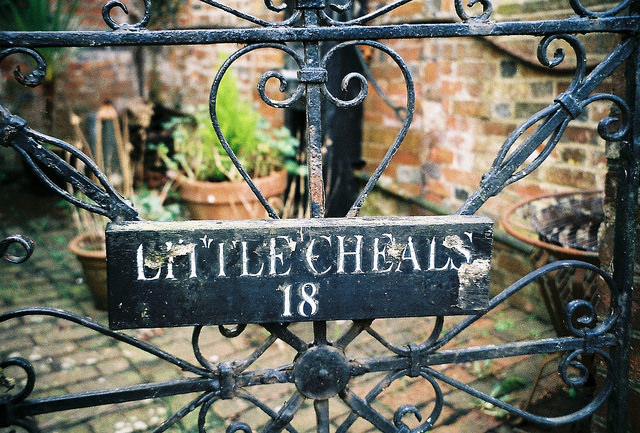
The 160 is probably the best equipped compact zoom I’ve used, with a very intelligent evolving viewfinder, and yielded shots like the one above.
The 120SW with its 28mm lens has become one of my core collection of half a dozen compacts, and I love its wide angle, sharp lens and moody vignetting.
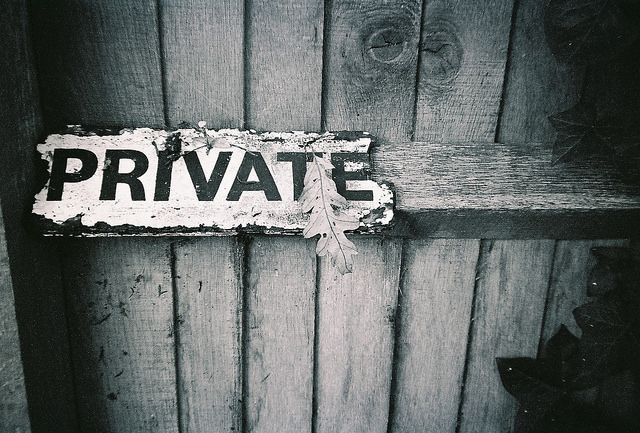
The 160 and the 170SL I sold for more each than the whole lot of cameras cost me altogether, taking me (and not for the first time) into negative investment cheapskate territory!
In fact from that lot alone, keeping just the 120SW and selling the best few of the others (and donating the rest to charity shops), I believe I made enough to own the 120SW and shoot and process a dozen rolls of AgfaPhoto Vista Plus 200 (high king of the cheapskate emulsions at £1 a roll in Poundland) for absolutely zero end cost.
It doesn’t get much more cheapskate than that!
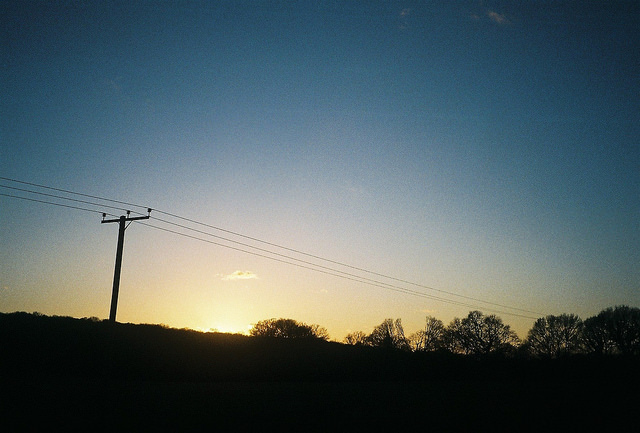
Another Pentax Espio, the understated yet surprisingly capable AF Zoom, cost a measly 95p plus a few pounds postage, and is one of the best Espios made.
It can turn out shots like those above and below, whilst being intuitive and great fun to use in the process. Alan’s something of a fan of this Espio, and reviewed it here.

As I mentioned before, I’m not keen on compact zooms, aside from the 120SW because of its 28mm wide end, so the Espio AF Zoom was sold in favour of keeping fixed lens compacts.
Subtracting the original cost of the camera, plus the purchase and processing of the roll of film I put through it, I was still left with a couple of pounds in my pocket.
Again, you can see why cheapskate photography is such an irresistible art!
Talking of fixed lens compacts, one of my favourites is the Minolta AF-S.
A superb little contrasty 35mm f/2.8 lens, good handling, decent clear bright viewfinder, accurate AF and the best film loading system I’ve used in a compact. I paid £6 for my original one, which was listed unimaginatively as “Camera”.
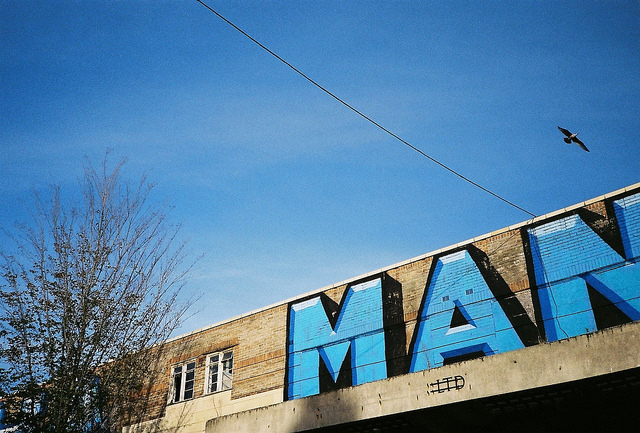
Check out those yummy blues on humble FujiColor C200 (the same emulsion incidentally at the Poundland AfgaPhoto Vista Plus 200, and £1 a roll).
I sold that one on in one of my camera purges, but again had a little change to spare even after shooting and processing a couple of rolls with it.
And some months later, looking back over the best photographs I shot with it inspired me to seek out another AF-S. This example came along with a high spec Minolta zoom compact, both fully working, for the grand total of 99p plus £3 postage.

Being able to shoot film, with charming vintage cameras – whether compacts, rangefinders or SLRS, is one of life’s simplest yet greatest joys for me.
Thirty years ago, it would have been an expensive hobby, much like it would today if you bought a new digital SLR or compact every month for two, three, four hundred pounds or more.
But for the vintage camera lover, we live in a golden age, and machines that cost hundreds in their heyday can now be enjoyed for pennies.
If you’re really lucky, you can chance on the ultimate grail of cheapskatery like I have a few times – having a camera that ends up paying you for using it!
The miracles of photography – and especially film photography, whose process somehow holds far more charm and mystery for me – can be in your hands for less than the cost of a (cheap!) lunch. Or even a free lunch!
So what are you waiting for, fellow cheapskate? Grab a bargain, get out there, shoot and enjoy!
Dan James is an enthusiastic (and cheapskate!) amateur photographer. He writes at 35hunter.wordpress.com and his photographs can be seen on his Flickr stream at danjamesphotography.com.


Another cheapskate here. I have many cameras, one was completely free, most were in the region of five to ten pounds and my most expensive cameras, late era SLRs complete with lenses in immaculate condition; a yashica samurai, and a Konica c35 rangefinder were less than £40. I’m also a huge fan of agfa vista 200, and various expired films. I used film pre-2006, and always dreamed of owning an SLR but any decent ones were about £400, so as a teenager from a not very well-off family it was an impossible dream. I had two cameras pre-2006, a halina or Miranda manual wind cheapo fixed-focus compact that my parents got for £3 from a car boot sale, and later a kodak APS compact I got half-price from Argos c.2001 which produced lovely pictures in daylight but had a hideously harsh flash in low light or indoors. Now I’m revelling in the ability to buy very sophisticated pieces of kit for less than the price of a pair of primark shoes. Thanks for the great article.
Hi Sophie, thanks for sharing your cheapskate experiences! You’re definitely one of us!
It’s a constant wonder to me when I buy a new (old) film camera for a few pounds and it feels like such a well made and built and designed object, of the kind that is so rare in 21st century consumer goods!
I’m not so fond of late era SLRs or compacts, but in terms of value for money, many of them are fantastic options, like late Canon EOS bodies, or the Minolta Dynax/ Maxxum series, to name just two. You can get super capable cameras that cost hundreds of pounds 15 or 20 years ago, for literally pocket money.
Do you have a blog or Flickr or anything where we could see your photos and/or your cameras?
hi dan , sophie and james , yes i am a cheapskate as well and on my days off i troll the second hand shops for cheap cameras and expired film, we have trade me here in new zealand [like ebay] and i cant stop buying $1-5 dollar cameras ,[5 dollars is about 3 squid] i love point and shoot cameras and like you dan i have a few pentax espio cameras they are cheap and take great photos ,also the multi exposure mode is cool, my fav is the pentax WR 90 , its water resistant so sweet to use in the rain, just posted shoots from a halina paulette electric on flickr[search tom leadbitter on flickr] ,got it for a macgyver [fivea, $ 5 dollars] its cheaply made falling apart has shutter lag but i got some cool shoots from it, also got a free zenit b ,it has no metering the helios lens has a big ding in it the shutter button falls out along with a 3 inch metal rod if turned up sidedown and to wind on you have to slowly jiggle the lever till you feel it bite then wind on , i love it, two shots left on the roll ,cant wait to see the photos , the suns coming up i am off to shot some film, regards tom leadbitter ps check me out on flickr
Tom, thanks for your comments here.
I’ve had a few of those old Zenits (B, E, 12, TTL…) and they certainly have a raw charm.
I like the ones with the selenium meters and exposure calculation dial, where you line up the two needles then can choose a combination of shutter speed and aperture at a glance.
I adore the Helios 44 lenses, and my favourite is the first 44-2 I got, as I mentioned in the original post, and is very battered, has a huge dent in the filter from where it dropped off a table on to a hardwood floor face first, and a few bubbles inside the glass. Still shoots beautifully though.
I had one of those WR90 Pentax, which came in the lot I mentioned in the post, but alas it didn’t work properly. I do like chunky and weatherproof cameras where you can take them out in the rain and not worry too much about a few splashes. I had a Canon Sure Shot A1 which was great for that…
Will check out your flickr. I love to see the different results from different cameras…
Hi, thanks, I have an instagram, my user id is sophiejdalston. I also am setting up a facebook page which I will direct people to when I get my latest five films back and upload the scans from the CDs. If I recall correctly those will be pictures from a Yashica Samurai x3.0, a Nikon 210AF, a Samsung Rocas 110 APS, the canon EOS IX-7 (also APS) and a yashica minitec AF.
An enticing collection! Is the Samurai one of the half frame cameras?
I had a little Pentax Efina APS camera a few months back which was wonderful quality to hold and use. But I never got round to shooting any film with it, and went off the idea of APS once I realised the expense and quality pay offs compared with 35mm.
Is the Minitec one with the waist level viewfinder?
Yes, the Samurai was the first in a series of half-frame cameras made by Yashica in the late 80s and early 90s.
Photo Hippo in Burnley process APS (though all pictures are made as 6″x4″) for comparitively cheaper than 35mm, as they do APS 40 exposure for the same price as 36exp 35mm, and APS 25 for the same price as 24exp 35mm. It’s a shame, but it appears the original specialist APS papers are obsolete so developers either develop to one size, or print on different sizes for a lot more money but those papers are not the original APS dimensions anyway. I like the grainy, raw feel of APS film, and the quality isn’t as bad as I remember (my first camera that I bought, was APS).
The Yashica Minitec AF is a compact early 90s camera that came out at around the same time as the T4 or T5, build quality is abysmal (cheaper plastic than those ‘toy cameras’ made by vivitar, suntone et al), but it has a superb lens on it, albeit Yashica’s own and not Carl Zeiss. It is one of a few cameras that gets described as ‘the poor man’s T4/T5’, though the funny thing is that when originally sold the minitec was only about £20 cheaper than its higher-end cousin. I also snagged a Yashica J Mini a couple of days back on eBay, I have seen them go for £20-£30 before due to also being labelled as a cheaper version of the T-series cameras; but nobody noticed the auction so I got it for five quid.
Sophie, I had a Yashica compact briefly, I think it was a Mini-something, and it had a waist level viewfinder you look down on. I think the lens was quite wide, 30 or 32mm.
I never got round to putting a roll through it, as it was a phase where I just got too many compacts in too short a period of time then had a purge and donated/ sold most of them.
I’m trying to get down to around half a dozen compacts, from the maybe 15 I still have now.
Favourites and definite keepers are the Konica C35 EF3, Minolta AF-S, Olympus XA, Ricoh TF-900, Minolta Big Finder AF50, and Pentax Espio 120SW (I don’t like zooms but it has a great 28mm lens at the wide end).
All others need further testing to see how they stack up, but include a Nikon AF3, Canon MC, Olympus Mju 1, and Yashica 35MC. I could keep all of these too as they each have their merits, I just want to hone down to a few and shoot each of them more often!
What are your favourite compacts?
Hmm for some reason it would not let me reply to your latest comment. My favourite compacts are number one:- the Nikon AF210, I got it in a charity job lot for a fiver and with some massive scuffs to the bodywork, but it works brilliantly, with very sharp, perfectly exposed pictures. Think it came out in 1994. Number two, is the Samsung Fino 800, it came out in 2002 I think and was sold as a cheap holiday snapper, but it has a very sharp, very fast lens, it has a modest zoom too but I don’t often use that. I got it for £4.54 on eBay but they often go for cheaper than that. Number three, is the aforementioned yashica minitec AF.
Haha no worries it put my comment in the fight place anyway.
Sophie, that’s a very humble little Nikon, I hadn’t heard of that one. 32mm is an unusual focal length.
Many people rave about the 28mm AF600, it looks like yours is a close sibling, and a lot cheaper. The AF600 I’ve seen for silly money on eBay.
The only Nikon I have (and have had) is the AF3, the third incarnation of the L35 range. I’ve only shot one roll of film, which was promising, but not stunning. One I plan to shoot a couple more rolls with, as I’ve seen some great photographs taken by other people. That was £5 + P&P from the Oxfam shop online, which is a great resource incidentally for film cheap film cameras.
Maybe I’ll look out for other later AF versions like yours.
Many of those Samsungs are very well equipped and have excellent lenses. I had a slightly older (I think, maybe mid 90s) Samsung AF Slim, which was a bit noisy and slow to fire up, but had plenty of features and a really impressive lens. I think that only cost about £5.
I have the Samsung model prior to the slim zoom range, the af zoom 1050 I think it is. Superb camera, very much like the Porsche designed beast Samsung came out with a couple of years later; but far less ugly. The only negative is it weighs around 500g and is far from compact. There are quite a few cameras in the nikon AF series knocking about, it is worth keeping a look out on eBay, the 600 is very overrated. I will keep an eye on Oxfam too as I have seen some interesting things on there, cameras-wise.
Had a look on eBay. Search for ‘nikon af camera’ then limit the category to ‘film cameras’, one or two AF210s on there, and quite a few AF220s and 230s. Also there are several AF240SVs and AF250SVs, the SV standing for ‘super viewfinder’, these were the last in the series and came out in the early noughties.
Sophie you’re a bad influence, I found and bought a Samsung Slim Zoom 70s and a Nikon AF230, less than a tenner for the pair!
The Samsung looks very similar to a Rollei Zoom 70 I had so I suspect it’s the same innards and lens.
Whoops Dan, I’m sure you will be very pleased with them though. :D. By the way I found out which yashica I think you had with the waist-level viewfinder, was it the ‘aw mini’? They look pretty cool but are quite hard to come by.
Sophie, I managed to win a lot a few days ago that contained both a Yashica AF-Mini and a Minitec for £10.59 in total! Let’s hope they both work as the seller suggests, I’m particularly excited about the Minitec as you’re not the first to rave about its lens performance…
Brilliant article, well sums up why it’s so much nicer to be a cheapskate :p
Another fantastic element, for me at least, is not having to worry about your camera! I do a lot of landscape photography, that means rain, mud, climbing fences, etc. An expensive digital camera quickly becomes a burden, but even if the worst happens and you fall into a river, you’ve only lost a few quid.
And it’ll probably still work in manual mode :p viva la cheapo!
That’s an excellent additional point James.
It reminded me that in my local Asda a couple of months back, where I have my film processed, I asked if they still did much business. The lady said they do loads still, and the majority is processing film in disposable cameras. Oh, from weddings, parties and so on, I enquired. Yes, she replied, but the majority from holidays. People don’t want to take all their expensive digital kit away with them in case it gets damaged, lost or stolen, so they leave it at home and pick up a couple of disposable film cameras instead.
Affirms your point entirely!
Even with old film stuff, I’m happier if I’m using slightly worn or otherwise less than perfect equipment. Anything in mint condition (even if it’s 30+ years old) I get nervous about dropping, scratching etc!
Thanks for commenting.
Very good point. Before I got back into film, I was planning on buying a Nikon digital SLR which, with a couple of cheap Tamron lenses, was still in the region of £750. When I thought about it, realistically, I realised I would probably never be brave enough to take it out, in case something happened to it.
With regard to finding cameras second hand in charity shops, that doesn’t happen round here as it is a very hipstery area, so any analogue cameras get snapped up (sorry for the pun) as soon as they are donated.
When you mention a figure like £750, I think of what you could get, film camera wise. A pretty nice Leica, at least three very classy Nikon F series, about six Contax 139Qs with Zeiss lenses, or about 75 great 35mm compacts!
Makes the digital option seem pointless and very expensive!
Sophie do you have, or have you considered, a mirrorless digital? I have a Sony NEX 3N (which cost about £130 second hand) and use it extensively with cheap adapters and my vintage M42 and Minolta lenses with excellent results. The NEX, plus adapter (~ £10) plus a couple of very capable M42 or Rokkor lenses (~ £25 each) is still under £200 in total, in my mind a very cheap digital set up.
Fuji of course do similar mirrorless cameras, as do the micro four thirds brands like Olympus and Panasonic.
I’m with Dan on that. I picked up a Olympus PEN digital with lens for about £50 about 6 months back. I’ve a few adaptors to fit my various F mount Nikon lenses. You can usually pick up a few years old dSLR for a fraction of the price. Although I’m Nikon fan, actually pentax k mount dSLR might make more sense as the lens support is phenomenal. The dSLR will mount any K lens (although Ricoh made ones may have issues) and you can mount any newer k lens on any old film SLR although you might be stuck with a fixed f/22 aperture
I actually got a Pentax DSLR for that precise reason – I had a few Pentax film bodies and lenses and wanted that instant compatibility.
The camera I bought (a K-x) was great as DSLRs go, but unfortunately it was such a shock coming from the Pentax film cameras.
The viewfinder was tiny and I found it really difficult to focus with the old manual focus lenses. It was a hugely disappointing experience.
So I researched some more and bought the Sony NEX. With its decent sized screen (no VF) – which also flips upward up to 180 degrees which is excellent for low/high/close shots – and both focus peaking and magnification to aid focusing, it’s a brilliant digital option for vintage lenses.
I don’t know how conscious a decision it was with the Sony designers, but they’ve made a range of mirrorless bodies that give new life to old lenses, are great fun to use, and can produce stunning pictures.
I know people who use Canon EOS SLRs and DSLRs as they have a huge range of adapters available , are cheap, light, compact and are very competent cameras. But again be aware that most consumer DSLRs aren’t going to have anything like as good a viewfinder as something like a Pentax ME Super, or indeed most classic 70s SLRs, and will feel very plasticky in comparison.
Thanks for the suggestion. I’m pretty besotted with film right now, though I may get a digital camera in the future. 🙂
I can second Dan’s recommendation for a mirrorless system if you want to experiment with digital, but use vintage lenses. I plumped for a Sony NEX 3N some time ago and got into adapted lenses by chance. I then got a Panasonic G3K – a micro-four thirds mirrorless DSLR style camera and loved the viewfinder. So I then bought the Sony A3000, which is basically the guts of a NEX camera in DSLR style body with a (very grainy) electronic viewfinder. Of course, what I really should have done was save the money I’d spent on three different cameras and put it towards buying a Sony A6000 or similar – a NEX with a viewfinder 🙂 We’re all wise with hindsight.
Basically, there will be something that fits the bill, just research for what would be a good fit for your needs. A mirrorless is much easier to adapt lenses for (and adapt just means buying the right adaptor ring which can ensure infinity focusing). If a DSLR is more to your liking, some makes can take some old lenses from other manufacturers, but some can only take their own legacy lenses and even then, careful research is needed in case the back of the lens you want to use protrudes too far into the body and interferes with the mirror.
I’m aware this is a primarily a film forum, so the above might be off topic. However, using adapted lenses means you are pretty much only able to use either Aperture Priority or fully Manual mode on the digital camera, so you could view it as a way to learn the mechanics of photography without wasting tons of (nowadays relatively expensive) film, and then feel more confident when using a film camera to achieve the shots you envisage.
A word of caution – buying old lenses to adapt can become very addictive – well documented by others. Just like film cameras of yesteryear, it’s easy to become more obsessed with the machines than the results they produce – I freely admit to being an addict, and I have sought out more than a few cameras reviewed on this site just to see what I thought of them, lol.
I think this is very much on-topic Harry, (of course this is Alan’s blog, he may not agree!) because you’re talking about cheaper ways to make photographs, ultimately.
For me, a reason I would never get caught up in new digital lenses is the cost. The sole reason I bought my NEX was to use with vintage lenses – originally the M42, Pentax K mount lenses I already had.
The NEX second hand cost about £130, an adapter a tenner, and lenses can be had from around £5-10 upwards. So for £150 I have a very capable digital camera with, say a Helios or Pentacon or Pentax-M lens, that for me gives much more satisfying results (and is more enjoyable to use with that beautiful old glass) than modern clinical digital lenses ever would.
I agree about the dangers of getting caught up in buying more and more though. I now try to restrict the mounts/systems I have, otherwise there are thousands of options out there. But I have had adapters and lenses for M39, Olympus OM, Konica AR too, that I’ve since sold on.
With my NEX now I mostly use M42, but also still have an adapter for the handful of Minolta lenses I have, because they really are wonderful lenses.
I’ll probably get one more adapter for the few Contax/ Yashica lenses I own too (bought for my Contax bodies), but really don’t want/ need to go any wider than that.
Even more than with compact cameras, with SLR lenses, there’s very little difference between the main lenses offered by the major players, so having a 50/1.7 or 50/1.8 prime lens say in five or six different mounts becomes a bit pointless (and starts to get expensive of course!)
Let’s try to keep it cheap(skate)!
Oh Dan, it’s like reading the list of my stuff (currently sat on the coffee table instead of being displayed or put away carefully). I too have adaptors for M42, Pentax, Canon FD and EOS, Olympus OM, Pentax Auto 110 (!), Nikon F and even a C/Y mount which I bought for a lens I was after on eBay which then went for more money than I was prepared to pay. The glaring omission is the Minolta MD adaptor, as I have read good things about Minolta glass. However, as you rightly say, if I already have a decent enough lens at a particular focal length, why do I keep looking at other marques in the same focal lengths… I need to have a very hard look at my stuff and rationalise before spending more money. It’s an addiction. Not to mention the rangefinder and P&S cameras. Oh well, it’s harmless enough and keeps me happy – and mostly I buy from eBay charity sites, so it’s at least marginally philanthropic.
I had missed the conversation Sophie had about the Yashica Minitec – coincidentally I bought a Yashica Microtec 120 and put the test roll into be developed on Saturday. It’ll be interesting to see how that turns out in case it has a nice lens too.
It’s very hard to be restrained! I just got fed up with having so many cameras sitting around and not being used, it made sense to consolidate down to the mounts I like most – M42, Minolta and C/Y.
I’m trying to do the same with compacts and get down to six, maybe 10 max.
Harry, the microtec series are superb. On a facebook group I am on someone posted a series of photos taken with a microtec zoom, think it was 120 but not sure. They were of snowy landscapes in Iceland in black and white and before I read which camera they were taken with, I would have thought they were taken with a top-notch SLR, or at the very least a high-end, mega-pricey compact such as a contax (who had the same patent company as Yashica incidentally). Crisp, stunning images with perfect contrast.
Sophie – I’ve been away travelling and have not quite got back into the swing of things. The initial results from the roll of film I put through the Microtec look promising, but I’ve only seen them on my phone screen so far. I’ll try to see them on a big screen and if it looks good then, I’ll definitely give it another go. Thanks for your input, and luckily, the buying fever seems to be abating somewhat – now I don’t regret it if I don’t win an auction for a camera on eBay. As Dan would no doubt agree, I think it’s time for me to concentrate on the cameras I have, and weed them down to a manageable number… bad Harry 🙂
Harry, and Sophie, I’ve just posted the best of the first couple of rolls with the Minitec AF I picked up on my Flickr – https://www.flickr.com/photos/danjamesphotography/albums/72157670809422064
I really like using it, and it’s fairly quiet, small and sleek for an AF Compact.
Most of the decent early compacts I’ve used (Nikon AF3, Konica C35 EF3, Minolta AF-S, Canon Sure Shots, Ricoh FF-3AF, Ricoh TF-900 etc) are much bulkier and noisier than the Minitec. Not a major problem for my kind of photography, but the relative quietness of the Minitec is refreshing and endearing.
Later film compacts that are quieter are nearly always zooms (eg Pentax Espios), so the Minitec falls in between these two eras and in some ways gives the best of both – a fixed, wide, sharp, fast(ish) lens, in a small(ish), quiet body.
I’m looking forward to using mine again soon.
I don’t know if this will work, but these are the scans as I received them from the film developers (Eye Culture in Bethnal Green):
https://goo.gl/photos/1hjQPPJUMfRbBkSQ7
You’re all killing me – just when I was reigning myself in – more to desire!
Me too, I’ve had a flurry of compact camera buying activity in the last couple of weeks even though I’m trying to narrow down my compact collection. It’s that irresistible allure!
great read! I love your view on (analog) photography and gear and I think I have some kind of the same philosophy on the topic.
I also enjoy processing my film at home and am experimenting with C14/Color-Negative developed in B&W Chemistry of course because of economic reasons. 🙂
Pulling a developed roll of film out of a spool gives me a similiar feeling as picking up a somewhat old camera in full function. 😉
Keep up the good work.
Best regards,
Lukas
(instagram: lksgls)
Thanks for your comments Lukas, glad you enjoyed the post.
I’m intrigued by processing C41 film in b/w chemistry, how does it come out?
there are many discussions going on about that topic in the different communites.
i just tried it because i have a little lot of color negative film and am only able to develop bw (rodinal/adonal).
i like stand development (also kinda cheapskate) because of its simplicity. 🙂 maybe i have to invest in a better scanner because the 5mp china plastic thing wouldn´t even satisfy the hardcore-cheapskates.
here some resource for that kind of cross-processing:
http://darkshape.blogspot.co.at/2011/12/49-guide-to-developing-c-41-films-in-b.html
https://www.flickr.com/groups/c41inbw
https://www.flickr.com/groups/rodinal/discuss/72157626770588601/